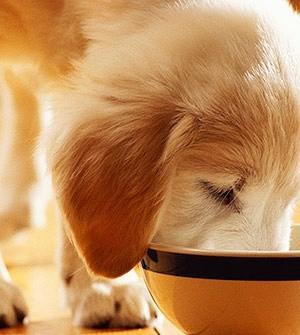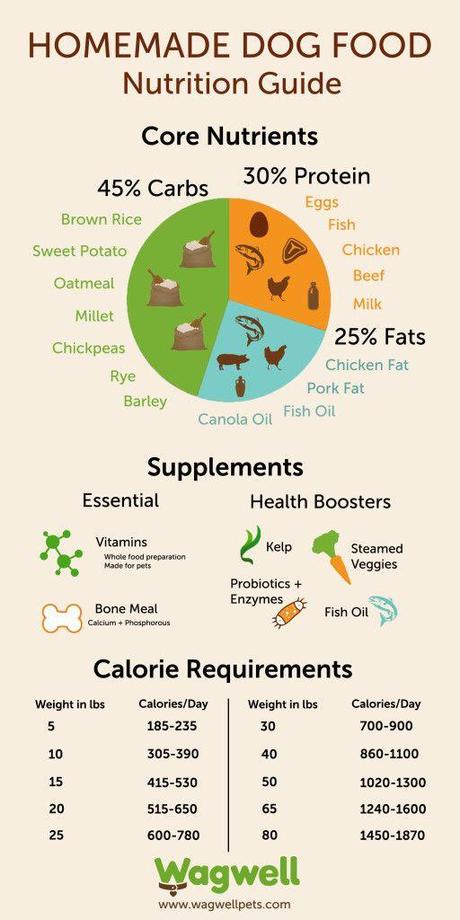
Apart from product contamination scares, numerous pet owners feel that homemade meals are a fresher option to ready-made pet food. There are also pet owners who have considerable time and have a quite strong bond with their pet and feel that if they’re going to maintain a healthy diet, they want their dog to eat healthy, as well.
(Check out Homemade Dog Food, Is It Any Good?)
Balanced Nutrition
Whether owners are getting recipes from a guide book, the net, or via their vet or veterinary nutritionist, one issue tops the list. Owners intend to make sure the recipe is going to supply something that is complete and balanced for their dog. From a nutritional perspective, that’s the biggest obstacle that someone has when trying to feed homemade. There aren’t any magic foods or ingredients for this.
Commercial pet foods are designed to provide sufficient nutrients. But dog owners who make homemade dog food must ensure that the diet includes a protein source, a carbohydrate source, sufficient vitamins and minerals, plus some fat. Dogs do have a necessity for a small sum of fat.
Home cooks can blend protein and carbohydrates in a variety of combinations, such as lamb and rice, beef and potatoes, or chicken and pasta. Carbs are an economical source of energy and supply some important amino acids and fatty acids. Even though owners can find plentiful recipes for homemade dog food online and in books, some professionals encourage pet owners to take the recipes first to their vet and ask if their pet doctor could help them determine if it’s balanced.
Moreover, owners doing homemade diets must have their dog and the diet assessed at least twice a year. Owners also need to remember that dogs in different life stages or with health disorders can have totally different dietary requirements than a normal, healthy adult canine.

Homemade Dog Food infographic. *
Supplementation
Do dogs eating homemade dog food require supplementation to make certain they’re getting sufficient nutrients? The answer is YES.
Specialists say nutritional inadequacies can result in health issues. Calcium is among the most common deficiency in a homemade diet plan that isn’t professionally balanced. When canines don’t get adequate calcium, they’re vulnerable to a condition known as nutritional secondary hyperparathyroidism, which can result in soft bones and bone injuries.
Vets have seen these kinds of results on young dogs consuming unbalanced homemade diets. They see issues with their bone growth — they’re clearly not growing normally, thus you’ll see bent limbs, or they’re really bent and bowed. Sometimes, it may also be serious enough that they see actual broken bones. Apart from calcium, other vitamins and minerals are crucial, too, such as magnesium, iron, and zinc. These nutrients need to be covered, which can be very tough for homemade dog food.
Time and Cost
Needless to say, it’s more time-consuming to cook than to buy commercial dog food at the store. As for expense, a lot will depend on the size of the dog. Large dogs, for example, Saint Bernard and Rottweiler, are more expensive to feed compared to small breeds. If you have a dog that’s over 50 or 60 lbs. — for instance, you have two or more of them — obviously, the cost will be more, compared to the owner that has two tiny Yorkie.
It’s also critical that owners keep in mind to stay thorough and strictly follow the suggested dietary formula. A lot of owners, as time passes, will make little alterations in the diet as a result of ease of cooking or price of ingredients, an event known as recipe drift. You should not make these changes without conferring with a vet, as they could trigger malnutrition.
Shelf-life and Storage
Packaged foods have a long shelf-life. Not so with homemade meals. It’s an advantage that with homemade food you’re opting for fresh ingredients; it’s a disadvantage that you don’t have a long shelf life. For small dogs, owners can make a big batch, freeze it, and take out servings as required. This is going to last for some time. But meals for large canines are best kept in the refrigerator since it’s most likely going to be gone in just a couple of days.
The important thing: Home-cooked diets can be very healthy and gratifying for owners, but demand a commitment of time and extra cost from the owner, and assessment with a vet to make sure the diet is not causing the dog harm.
* image source

